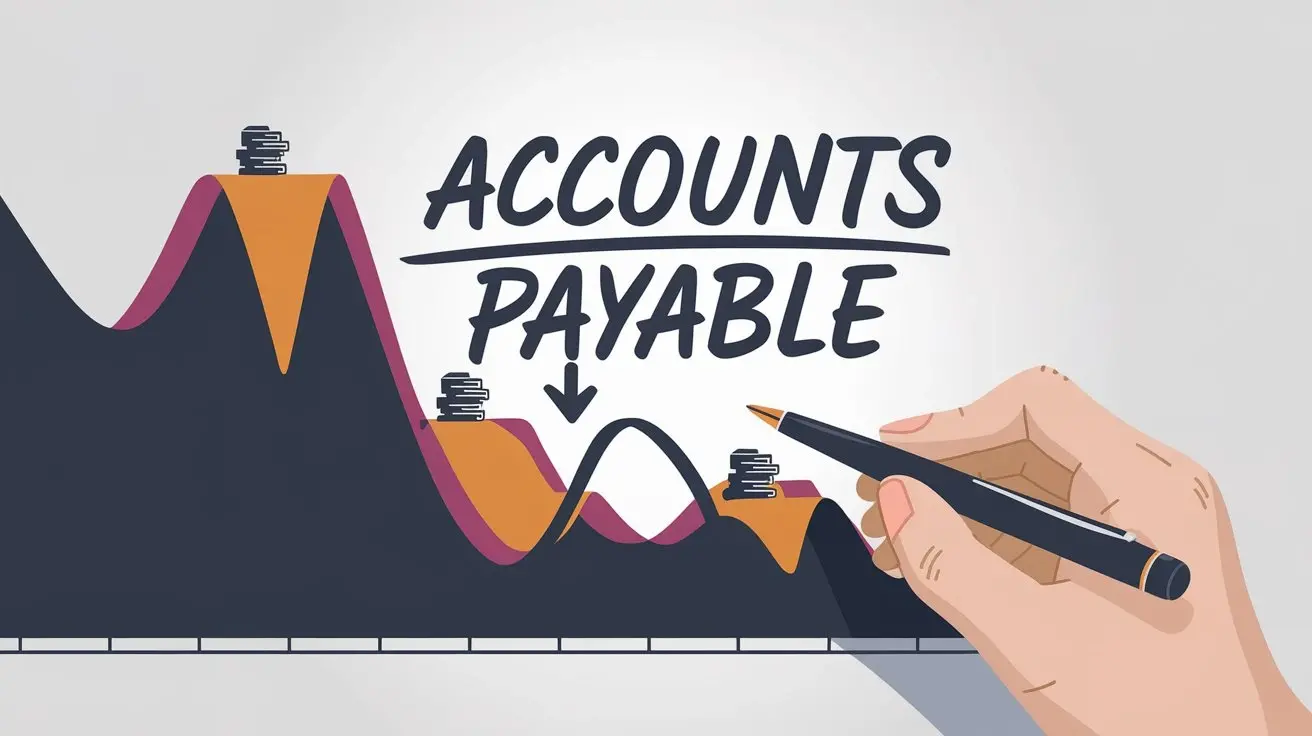How Does Accounts Payable Affect Cash Flow?

This is because accounts payable are a part of the cash flow of a company. Accounts payable is the money that a business owes to other businesses or people that give goods and services under an agreement that the buyer will pay at a later date. Accounts payable management plays a crucial role in working capital and funds management in organizations. Here's a closer look at how accounts payable affects cash flow:
Timing of Payments
Accounts payable are short-term loans that the business receives free of interest from the suppliers. This relieves the business of the pressure of buying raw materials, equipment, inventory, and other goods and services in cash on the spot. While that is correct, it is important to note that this only happens when the invoices of such purchases are paid; meaning that cash is out of the business.
These payments which affect the cash flow are on the other hand determined by timing and management. Paying as late as likely enables a firm to retain more cash in its possession and increases cash in the flow of the enterprise during a given period. Nevertheless, organizations have to ensure that they do not completely exploit these payment terms while, at the same time, ensuring that their suppliers receive timely payments.
Cost of Sales and Cash Expenses
Whenever a company purchases goods and services from suppliers in the course of its operations, manufacturing and acquiring inventory, or availing supplies, it is directly enhancing the accounts payable balance. When these short-term payables are due and have been paid, this leads to a business expense and thus a cash outflow to the suppliers. As the balance in the A/P increases, more cash will be handed over in future periods to settle the cumulative due.
Thus if accounts payable are sustained low relative to cash flow from operations and financing, there can be adequate operating cash on hand. Here, if payables are allowed to increase to levels where they become very large they can lead to pressure on the liquidity of the business upon the payment being made to the suppliers. Working capital requirements compel companies to request funding to fund the difference between cash receipts from sales and cash paid to suppliers.
Supply Chain Management
Moreover, for manufacturers and retailers in particular, supply chain management is directly linked to accounts payable. A cash conversion cycle is a period in which any given company receives inventory from its suppliers and then sells finished products to its customers. Accounts payable do of course arrive in the form of goods but they get converted from inventory to cash as sales occur.
This is done by either delaying payment to suppliers or by selling inventory faster to customers, to extend the firm’s cash beyond the time needed to complete the procurement and sales cycle. At the same time, extending supplier terms, or inventory holding time, may increase the cycle. Managers are often forced to pay attention to supply chain management and inventory turns to influence the role that accounts payable plays about cash flows.
Growth and Expansion
The nature of accounts payable means that as a company moves up its value-added chain by selling more goods and services or acquiring other companies, the accounts payable will rise in a like manner. The supplier purchases and operating expenses growth calls for more payables to support growth required more. This is acceptable provided this is accompanied by cash and revenue from customers matching the accounts payable.
However, lags arise when growth occurs where payables increase while cash receipts are lagged in the initial periods due to temporal differences. It remains true that vendors and suppliers may experience higher cash outflows to meet pay while the buyers may experience a tight cash position until both sides come through again. Companies require working capital management Strategies to cover accounts payable during the periods of growth phases.
Key Takeaways
Here are some key points to keep in mind about the relationship between accounts payable and cash flow:
Accounts payable is stated as payable for future cash for the amounts that have been paid to short-term suppliers. This allows companies to produce operating cash flows before they can be let off with cash.
While noting that accounts payable can be stretched through the terms of payment to help cash flow, paying late all the time is detrimental to the suppliers.
The direct increase of payables does raise the subsequent cash payment required for offsetting the liabilities and this tightens the credit fund if not controlled.
– Flows from accounts receivable that support sales and other revenues must be enhanced through proper supply chain and working capital management linked to accounts payable.
It is acceptable when expanding accounts payable is a by-product of revenue and cash flow increment due to the firm’s growth. Liquidity may be relatively tight during the peaks but overall sharply fluctuating demand levels are accounted for by instability.
Since the impacts accounts payable have on cash flows have significant strategic consequences, the timing and magnitude of these impacts must be known by CFOs, treasurers, and other personnel responsible for preparing financial forecasts and cash budgets. Both payables and collections impacting revenues should be monitored and managed so as not to create spikes and dips in the flow of cash. Accounts payable is dynamically flexible and can be used as a source of funding rather than using up cash.
Contact us here for Accounts Payable Services now!

